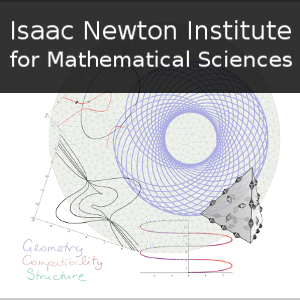FEEC 4 GR?
1 hour 14 mins,
243.28 MB,
WebM
640x360,
30.0 fps,
44100 Hz,
448.86 kbits/sec
Share this media item:
Embed this media item:
Embed this media item:
About this item

| Description: |
Arnold, D
Thursday 3rd October 2019 - 16:00 to 17:00 |
|---|
| Created: | 2019-10-03 17:18 |
|---|---|
| Collection: | Geometry, compatibility and structure preservation in computational differential equations |
| Publisher: | Isaac Newton Institute |
| Copyright: | Arnold, D |
| Language: | eng (English) |
| Distribution: |
World
|
| Explicit content: | No |
| Aspect Ratio: | 16:9 |
| Screencast: | No |
| Bumper: | UCS Default |
| Trailer: | UCS Default |
| Abstract: | The finite element exterior calculus (FEEC) has proven to be a powerful tool for the design and understanding of numerical methods for solving PDEs from many branches of physics: solid mechanics, fluid flow, electromagnetics, etc. Based on preserving crucial geometric and topological structures underlying the equations, it is a prime example of a structure-preserving numerical method. It has organized many known finite element methods resulting in the periodic table of finite elements. For elasticity, which is not covered by the table, it led to new methods with long sought-after properties. Might the FEEC approach lead to better numerical solutions of the Einstein equations as well? This talk will explore this question through two examples: the Einstein--Bianchi formulation of the Einstein equations based on Bel decomposition of the Weyl tensor, and the Regge elements, a family of finite elements inspired by Regge calculus. Our goal in the talk is to raise questions and inspire future work; we do not purport to provide anything near definitive answers. |
|---|---|
Available Formats
| Format | Quality | Bitrate | Size | |||
|---|---|---|---|---|---|---|
| MPEG-4 Video | 640x360 | 1.94 Mbits/sec | 1.05 GB | View | Download | |
| WebM * | 640x360 | 448.86 kbits/sec | 243.28 MB | View | Download | |
| iPod Video | 480x270 | 525.14 kbits/sec | 284.62 MB | View | Download | |
| MP3 | 44100 Hz | 251.59 kbits/sec | 136.36 MB | Listen | Download | |
| Auto | (Allows browser to choose a format it supports) | |||||

